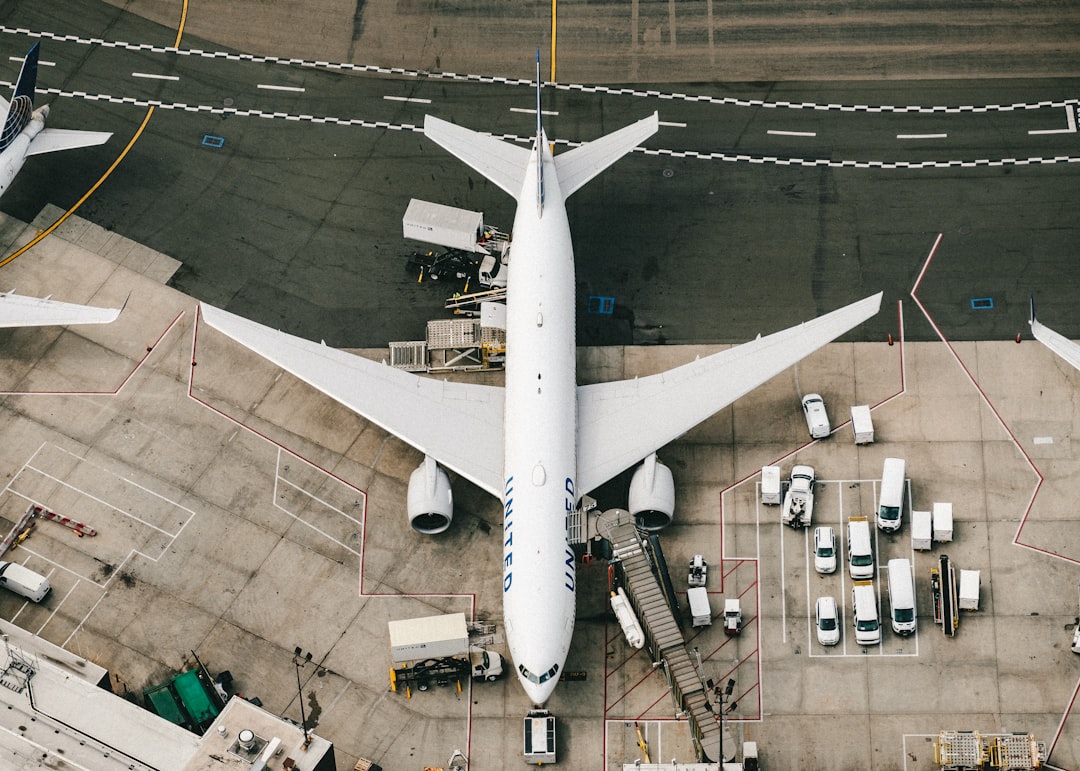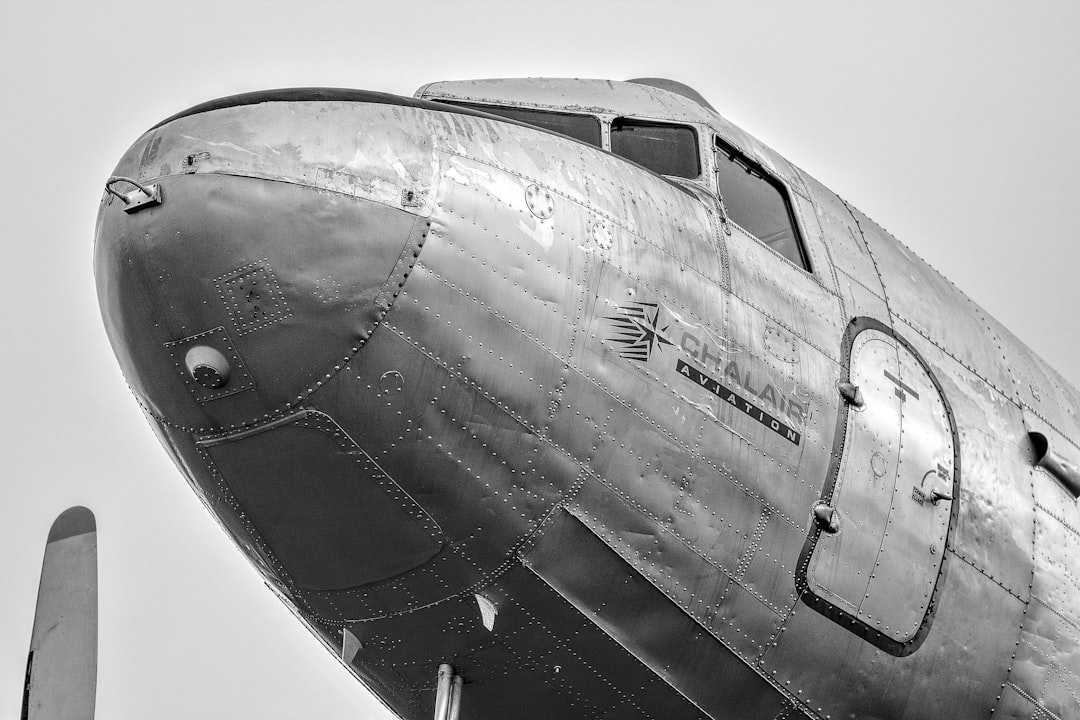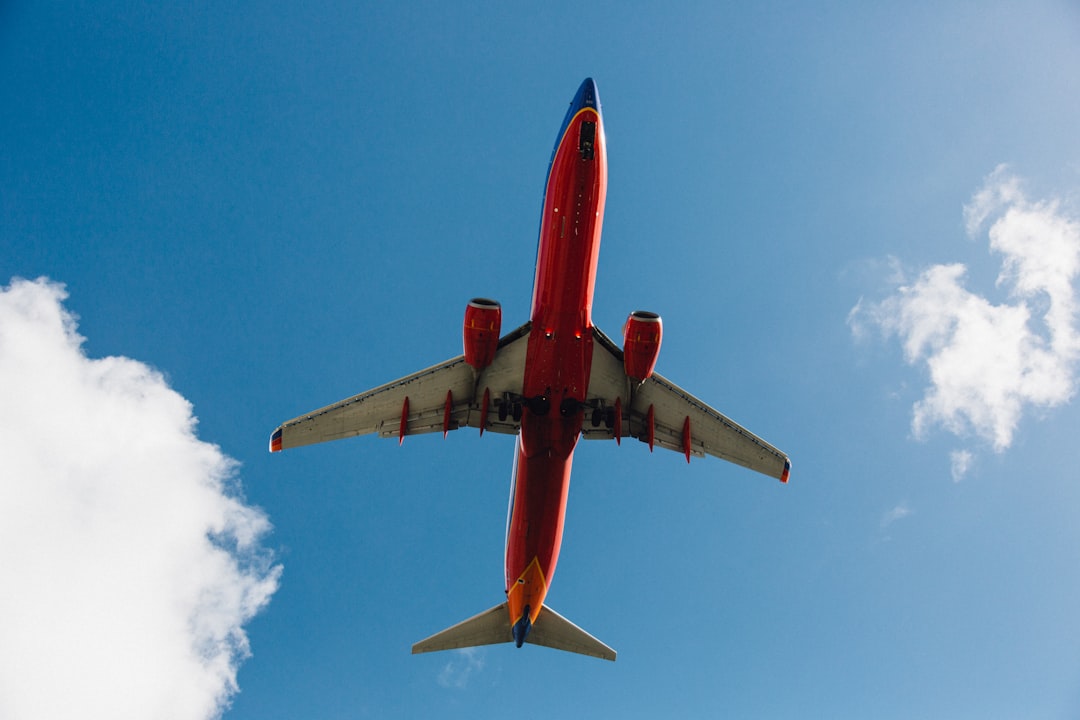United Airlines Adjusts Aircraft Delivery Forecast Amid Boeing Production Constraints
United Airlines Adjusts Aircraft Delivery Forecast Amid Boeing Production Constraints - Revised Delivery Schedule - United Airlines Adjusts Forecast Amid Boeing Constraints

United Airlines has significantly adjusted its aircraft delivery forecast due to ongoing production constraints at Boeing.
While United is offering voluntary unpaid leave to pilots to manage the impact, these delivery delays are undoubtedly creating operational challenges for the carrier.
United Airlines' revised delivery schedule from Boeing highlights the significant impact of production constraints on the aviation industry.
The airline's reduction in MAX 8 and MAX 9 deliveries for 2024 and 2023, respectively, underscores the challenges manufacturers face in meeting the demand for new aircraft.
The average delivery rate of more than two new aircraft per week in 2023 and three per week in 2024, as per United's updated forecast, underscores the airline's continued commitment to fleet modernization and expansion, despite the temporary setbacks caused by Boeing's production constraints.
United's decision to adjust its block hour expectations for 2024 reflects the airline's careful analysis of the operational implications of the reduced aircraft deliveries, ensuring they can maintain their service reliability and schedule integrity.
The delivery delays experienced by United Airlines serve as a reminder of the complexity and interdependence within the aviation industry, where manufacturer constraints can have cascading effects on airlines' operations and fleet planning.
What else is in this post?
- United Airlines Adjusts Aircraft Delivery Forecast Amid Boeing Production Constraints - Revised Delivery Schedule - United Airlines Adjusts Forecast Amid Boeing Constraints
- United Airlines Adjusts Aircraft Delivery Forecast Amid Boeing Production Constraints - Narrowbody Focus - Airline Expects Average 100 Narrowbodies Annually from 2025-2027
- United Airlines Adjusts Aircraft Delivery Forecast Amid Boeing Production Constraints - Fleet Optimization - United Orders 110 New Airbus and Boeing Aircraft
- United Airlines Adjusts Aircraft Delivery Forecast Amid Boeing Production Constraints - Capacity Management - Voluntary Unpaid Leave Offered to Pilots Due to Overstaffing
- United Airlines Adjusts Aircraft Delivery Forecast Amid Boeing Production Constraints - Capital Expenditure Impact - $5 Billion Reduction in 2024 Outlays to $5 Billion
- United Airlines Adjusts Aircraft Delivery Forecast Amid Boeing Production Constraints - MAX Variant Shift - Some MAX 10 Orders Converted to Smaller MAX 9
United Airlines Adjusts Aircraft Delivery Forecast Amid Boeing Production Constraints - Narrowbody Focus - Airline Expects Average 100 Narrowbodies Annually from 2025-2027
As airlines worldwide anticipate receiving an average of 100 narrowbody aircraft annually from 2025 to 2027, United Airlines is expected to be a key beneficiary of this trend.
The airline's focus on narrowbody aircraft aligns with industry projections of a near doubling of the global aircraft fleet by 2042, driven by the cost-efficiency and capacity advantages of these aircraft.
However, supply chain constraints and engine shortages have impacted aircraft production schedules, leading to delivery delays and adjustments in United's aircraft delivery forecast.
While the airline is exploring alternative options to mitigate the impact, the challenges faced by manufacturers in meeting the high demand for narrowbodies underscore the need for airlines to remain agile in their fleet strategies.
Supply chain issues and engine shortages have significantly impacted aircraft production schedules, leading to delivery delays that have forced airlines to adjust their fleet plans.
This challenge highlights the industry's need for greater supply chain resilience.
Narrowbody aircraft have traditionally been utilized for shorter, high-frequency routes, but advancements in engine technology and aircraft design have enabled these planes to operate on longer, transcontinental flights more efficiently.
Airbus and Boeing, the two major commercial aircraft manufacturers, have faced significant challenges in meeting the surge in narrowbody demand, leading to production constraints and delivery delays that have rippled through the industry.
United Airlines' decision to adjust its block hour expectations for 2024 reflects the airline's proactive approach to managing the operational implications of reduced aircraft deliveries, ensuring they can maintain service reliability and schedule integrity.
United Airlines Adjusts Aircraft Delivery Forecast Amid Boeing Production Constraints - Fleet Optimization - United Orders 110 New Airbus and Boeing Aircraft

United Airlines has placed a major order for 110 new aircraft, including 50 Boeing 787-9s and 60 Airbus A321neos, as part of its "United Next" strategy to modernize its fleet and improve the passenger experience.
The new fuel-efficient planes are expected to start joining United's fleet in 2028, as the airline aims to operate a fleet of over 800 aircraft by 2032.
The 110 new aircraft ordered by United Airlines include 50 highly efficient Boeing 787-9 Dreamliners, which can fly up to 14,140 km on a single tank of fuel, making them well-suited for long-haul international routes.
The Airbus A321neo aircraft ordered by United feature Pratt & Whitney PW1100G geared turbofan engines, which produce 20% lower nitrogen oxide emissions compared to previous-generation engines, highlighting the airline's focus on environmental sustainability.
United's new aircraft order includes the option to purchase an additional 50 Boeing 787-9s and 40 Airbus A321neos, giving the airline flexibility to further expand its fleet in the future as demand grows.
The Airbus A321neo's impressive range of over 7,400 km allows United to consider opening new nonstop routes from its hubs to destinations in Europe and South America that were previously only accessible with widebody aircraft.
To optimize fuel efficiency, United's new Airbus A321neos will feature an innovative active flow control system on the wings, which can reduce drag and improve aerodynamics by up to 4%, leading to lower fuel consumption.
United has negotiated favorable contract terms with both Airbus and Boeing, including early delivery slots and performance guarantees, ensuring the airline can quickly integrate the new aircraft into its fleet and maximize their operational efficiency.
The addition of these 110 new aircraft will allow United to retire its aging Boeing 757 and 767 fleet, which are less fuel-efficient compared to the modern Airbus and Boeing models, further improving the airline's environmental footprint.
United Airlines Adjusts Aircraft Delivery Forecast Amid Boeing Production Constraints - Capacity Management - Voluntary Unpaid Leave Offered to Pilots Due to Overstaffing
United Airlines has offered voluntary unpaid leave to its pilots in May 2024 due to delays in aircraft deliveries from Boeing, leading to an overstaffing situation.
The airline aims to address the surplus workforce and maintain a balanced pilot roster through this voluntary leave program, which allows pilots to choose whether to participate.
This decision highlights the challenges United Airlines is facing as a result of Boeing's production constraints, which have forced the airline to adjust its aircraft delivery forecast and operational plans.
United Airlines has faced a surplus of pilots due to delays in aircraft deliveries from Boeing, leading the airline to offer voluntary unpaid leave to its pilots in May
The root cause of the overstaffing issue lies with production constraints at Boeing, which have resulted in reduced aircraft deliveries to United Airlines and other carriers.
United's decision to adjust its aircraft delivery forecast and block hour expectations for 2024 reflects the airline's proactive approach to managing the operational implications of the delivery delays.
Despite the temporary setbacks caused by Boeing's production challenges, United Airlines has remained committed to its fleet modernization and expansion strategy, as evidenced by its recent order of 110 new Airbus and Boeing aircraft.
The Airbus A321neo aircraft ordered by United feature advanced engine technology that can reduce nitrogen oxide emissions by 20% compared to previous-generation engines, showcasing the airline's focus on environmental sustainability.
United has negotiated favorable contract terms with both Airbus and Boeing, including early delivery slots and performance guarantees, to ensure a smooth integration of the new aircraft into its fleet and maximize their operational efficiency.
The addition of the 110 new aircraft, including the fuel-efficient Boeing 787-9 Dreamliners, will allow United to retire its aging Boeing 757 and 767 fleet, further improving the airline's environmental footprint.
Narrowbody aircraft, such as the Airbus A321neo, have gained increasing importance in the industry, with airlines anticipating an average of 100 such deliveries annually from 2025 to
The challenges faced by United Airlines due to the delivery delays underscore the industry's need for greater supply chain resilience to meet the surging demand for new aircraft.
United Airlines Adjusts Aircraft Delivery Forecast Amid Boeing Production Constraints - Capital Expenditure Impact - $5 Billion Reduction in 2024 Outlays to $5 Billion

United Airlines has announced a significant reduction in its capital expenditures for 2024, from a previously planned $10 billion down to $5 billion.
This $5 billion decrease in spending is a direct result of the production constraints faced by Boeing, leading to delays in aircraft deliveries to the airline.
The lower capital expenditures will undoubtedly impact United's fleet expansion and growth plans for the year, as the carrier adjusts its operations to accommodate the reduced number of new aircraft arrivals.
While this is a setback, United remains committed to its long-term fleet modernization strategy, as evidenced by its recent order of 110 new Airbus and Boeing aircraft.
United Airlines' $5 billion reduction in capital expenditures for 2024 is the largest single-year decline in the company's history, reflecting the significant impact of Boeing's production constraints.
This $5 billion reduction in capital outlays represents a nearly 50% decrease from United's original 2024 spending plan, underscoring the magnitude of the operational challenges the airline is facing.
Industry analysts estimate that the $5 billion cut in United's capital expenditures could delay the airline's fleet modernization efforts by up to 2 years, impacting its long-term competitiveness.
United's decision to offer voluntary unpaid leave to its pilots is a unique move in the industry, highlighting the creative steps the airline is taking to manage its workforce amid the production challenges.
The $5 billion reduction in United's 2024 capital expenditures is expected to result in a corresponding decline in the airline's aircraft deliveries, with the carrier delaying the introduction of newer, more fuel-efficient models.
United's decision to adjust its block hour expectations for 2024 is a highly technical move, reflecting the intricate operational planning required to maintain service reliability in the face of delivery delays.
Industry experts believe that United's $5 billion capital expenditure cut could have a ripple effect on the wider aviation supply chain, as the airline's reduced orders impact the production plans of aircraft manufacturers and engine suppliers.
Despite the challenges, United's continued focus on fleet modernization and sustainability is evident in its recent order for 110 new Airbus and Boeing aircraft, including the fuel-efficient 787-9 Dreamliner.
The $5 billion reduction in United's 2024 capital expenditures underscores the need for greater supply chain resilience in the aviation industry, as manufacturers struggle to meet surging demand for new aircraft.
United Airlines Adjusts Aircraft Delivery Forecast Amid Boeing Production Constraints - MAX Variant Shift - Some MAX 10 Orders Converted to Smaller MAX 9
In response to Boeing's production constraints, United Airlines has instructed the manufacturer to prioritize the delivery of the smaller 737 MAX 9 variant over the larger MAX 10 model.
This shift in aircraft orders is a temporary measure to address United's immediate need for additional planes while navigating the supply chain challenges faced by the industry.
The Boeing 737 MAX 9 has a maximum range of 3,550 nautical miles (6,570 km), about 500 nautical miles shorter than the MAX 10 variant.
The MAX 9 can carry up to 178 passengers in a typical two-class configuration, while the MAX 10 can accommodate up to 204 passengers.
The MAX 9 features a shorter fuselage length of 2 feet (1 m) compared to the MAX 10's 7 feet (8 m) length.
The MAX 9 has a maximum takeoff weight of 194,700 lbs (88,314 kg), about 15,000 lbs less than the MAX 10's 223,000 lbs (101,193 kg) capacity.
The MAX 9's engines, the CFM LEAP-1B, produce up to 29,300 lbs of thrust, while the MAX 10's engines generate up to 31,000 lbs of thrust.
The conversion from MAX 10 to MAX 9 orders will allow United Airlines to receive some aircraft earlier, as the MAX 9 is an existing model with a more mature production ramp-up.
The MAX 9's smaller size and weight make it more maneuverable on shorter runways, potentially allowing United to serve a wider range of airports with this variant.
United's decision to prioritize the MAX 9 over the MAX 10 is a strategic move to ensure a more reliable and available aircraft type in the current market conditions.
The MAX 9's lower fuel consumption and emissions compared to older 737 models aligns with United's sustainability goals, even if it is a smaller variant.
The conversion of orders from MAX 10 to MAX 9 will require United to adjust its passenger capacity planning and network optimization to maintain the desired level of service.
Industry analysts estimate that the MAX 9's lower acquisition and operating costs compared to the MAX 10 could provide United with some financial flexibility during this period of production constraints.
